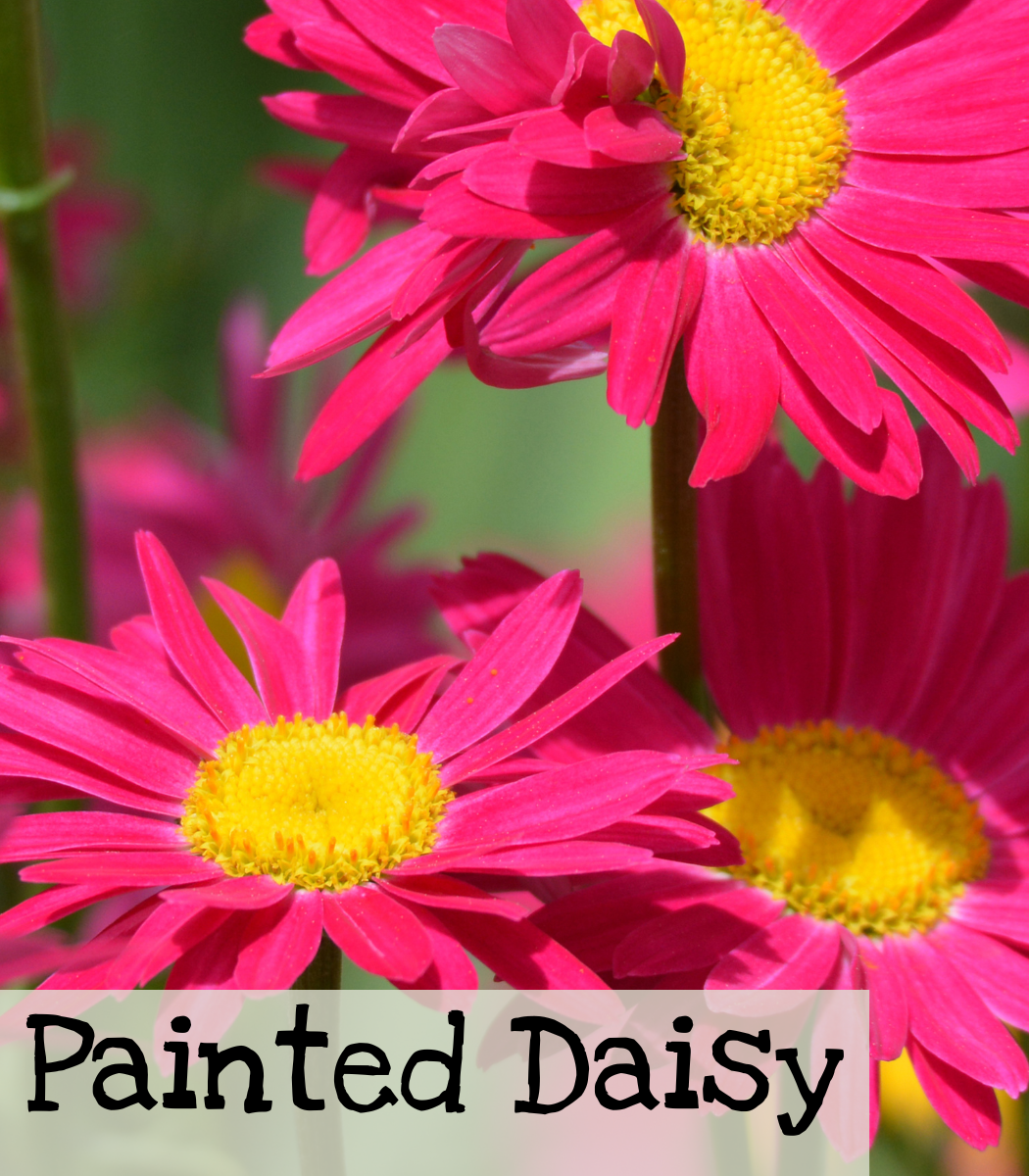
Painted Daisy
With blooms in shades of white, purple, pink, yellow, and red, the painted daisy is a showy perennial. Also known as a pyrethrum daisy, the blooms are excellent for arrangements.
|
Mixed Colors; Rainbow Mix |
|
Tanacetum coccineum: Mixed Colors Chrysanthemum carinatum: Rainbow Mix |
|
Easy |
|
Intermediate |
|
3 years if properly stored |
|
Mixed Colors: Perennial (zones 5-9) Rainbow Mix: Annual |
|
7-21 days |
|
None |
|
Surface Sow |
|
|
|
Seeds need light for germination Full sun |
|
Second year |
|
Mar, Apr, May |
|
Yes |

Growing Tips


When to Start
Spring: 6-8 weeks before the last frost date. (End of February/beginning of March for GA.)
Direct sow or Transplant: After all the danger of frost has passed. (May 1 for Jefferson, GA)
How to Grow
To start indoors, start painted daisies 6-8 weeks before the last frost date. Use sterile, pre-moistened seed starting mix or coco coir. Then sow seeds into cells or pots. As painted daises need light to germinate, gently press the seeds into the soil. Then place the cells or pots under grow lights. Keep soil moist but not soggy. Pot up as needed once they have at least 2 true leaves. Or, direct sow after all danger of frost has passed. Gently press the seeds into the soil. They can be very lightly covered with soil to keep them from blowing away. Keep them moist but not soggy.
Care
Plant or transplant in full sun and well-draining soil. Daisies dislike humidity, which makes them a little more challenging to grow in humid areas. When growing in humid climates, create good air circulation with proper plant spacing. Space plants 12-18 inches apart.
Keep the soil moist but not soggy as daisies dislike wet feet. Watering at the base and keeping the leaves dry will help prevent fungal problems that daisies are susceptible to getting. Good air circulation will also help with prevention.
To create a more bushy plant, pinch back when they reach 6-8 inches tall. Dead-head plants to encourage more and prolong the blooming season until you are ready for it to go to seed. Flowers bloom in summer and are good, cut flowers.
For winter protection, mulch the plants heavily and cover them to protect them from any freezes.
Pest Management
Daisies are flowers that you can put to work for you. Not only are they pretty flowers, but they also attract numerous beneficial insects to your garden, which is a technique called companion planting. These beneficial insects will eat pests. This helps control the pest population naturally.
Plant them near your zucchini and potatoes to attract predators that will eat aphids and squash vine borers. If you struggle with leaf roller caterpillars in your green beans, daisies will help you! These are only some of the benefits daisies will provide. For a more complete list of companion plants, check out my companion plant video and list of companion plants.
Seed Saving

Isolation Distance
Painted Daises are insect dependent for pollination. Isolate them by 1/2 mile to prevent cross-pollination for seed purity.
Instructions
Select healthy, robust daisies free of any signs of disease or insect infestation for seeds. Seeds carry the traits of the parent plant. Choose the daisies that exhibit the traits you wish to preserve. Consider bloom size, color, and shape, as well as blooming time.
Allow the biggest and healthiest blooms to mature on the plant. Then, cover the seed head with a fine mesh bag as soon as the flower petals shrivel and die. Use an elastic band to keep the bag in place. This prevents daisy seeds from spilling onto the soil before harvest.
Clip the flower head from the main stem once the seeds are dry and dark. Then separate plant debris from the seeds by removing the mesh bag placing the flower head in a paper bag and shaking to loosen the seeds. Seeds settle to the bottom of the bag. Remove plant debris by hand.
Features
- Good cut flowers
- Pollinator friendly
- Container friendly
- Drought tolerant
- Poor soil tolerant
- Deer resistant
- Rabbit resistant
- Mixed Colors: Perennial in zones 5-9. Flowers appear in the second year and are a colorful mix of pink, rose, red, and crimson shades.
- Rainbow Mix: An annual flower with blooms in shades of yellow, red, and white.

Daisies are susceptible to fungal diseases. There are a couple of things you can do that will help with prevention. One, bottom water to keep the leaves dry. Two, space the plants 12-18 inches apart for good air circulation.
Sources:
Burpee.com
Edenbrothers.com
